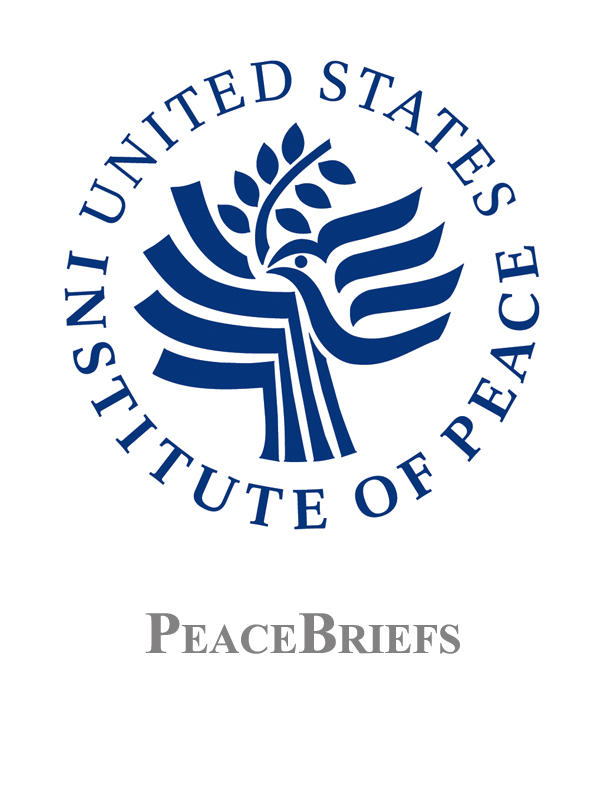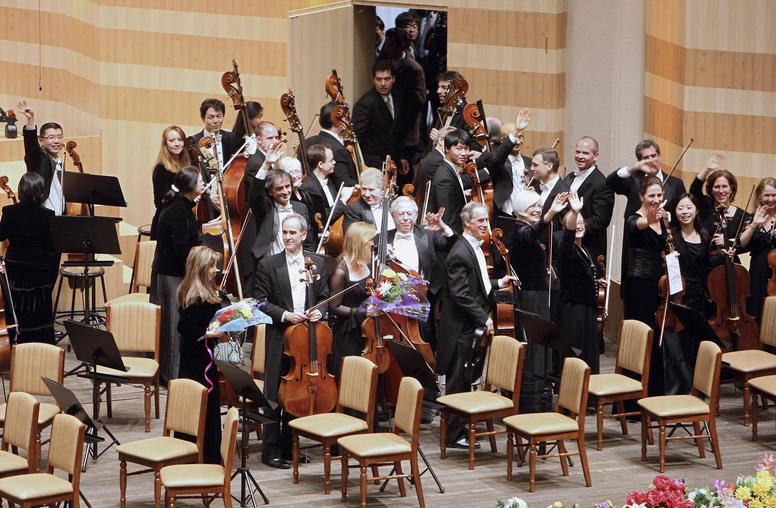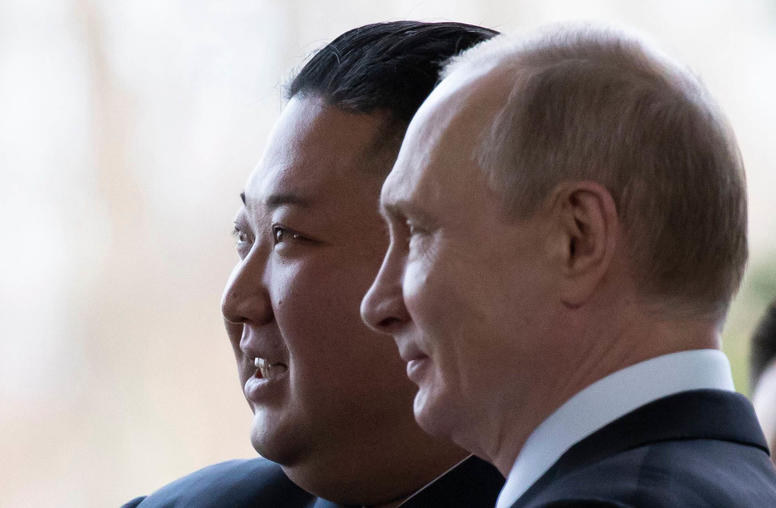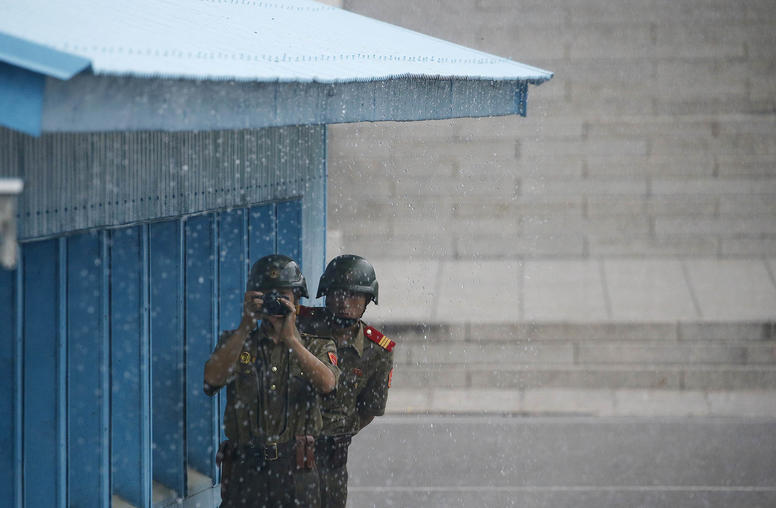North Korea's Nuclear Posture: Policy Options for the United States
The United States finds itself embroiled for the second time in a decade with North Korea over the isolated Stalinist state's quest for nuclear weapons. Pyongyang's admission in October to having a heretofore secret program to acquire weapons grade material from highly enriched uranium (HEU), in violation of the 1994 U.S.-DPRK Agreed Framework and its other nonproliferation commitments, has spiked tensions in the region, distracted Washington from Iraq and the war on terrorism, and left the administration searching for a policy response.

The election this week of a new South Korean president who favors the continuation of the "Sunshine" policy of unconditional engagement with North Korea may further complicate the challenge of policy formulation and coordination for the United States.
Pyongyang and the United States (with the backing of key regional states) are engaged in a high stakes confrontation, one in which there is a very real danger of miscalculation resulting from failures to understand correctly both the perceptions and stakes of the other side, as well as the second and third order consequences of various tactical choices.
In response to the deteriorating situation on the Korean peninsula, the United States Institute of Peace convened a meeting of seasoned policy analysts with long experience on Korean issues to consider U.S. policy options. While the purpose of the meeting was to explore rather than to prescribe specific courses of action, the discussion centered on the advantages and risks associated with a range of possible U.S. responses to North Korea's latest challenge.
U.S. Policy Options
While the administration clearly would prefer to deal with "one rogue at a time," North Korea is not likely to allow the United States that luxury. Pyongyang's recent announcement that it intends to restart its research reactor at Yongbyon—idle since the signing of the U.S.-DPRK Agreed Framework in October 1994—is the latest reminder that North Korea will not accommodate Washington's preferred timetable.
Implicit in the announcement of the decision to unfreeze the Yongbyon reactor are threats to move higher on the escalatory ladder. The North could, for instance, begin work on two larger unfinished reactors, expel IAEA monitors from Yongbyon, and/or move to reprocess the fuel rods removed from the research reactor in May 1994 (an action the United States was determined to prevent, by military means if necessary).
One of the lessons of the first nuclear crisis and the subsequent U.S. engagement of North Korea is that effective U.S. policy requires a clear overall objective and the establishment of "red-lines" that are fully understood by, and credible with, the leadership of North Korea. As the administration formulates its response, it will want to consider the benefits and risks associated with the full range of policy responses. These can be loosely categorized as "tolerate," "negotiate," and "retaliate."
"Tolerate." While not condoning or approving North Korea's behavior, the United States could adopt a hands-off approach, refusing to engage the North unless and until it visibly and verifiably dismantles its HEU program and maintains the freeze at Yongbyon. The United States would deal with North Korea indirectly through proxies (China, Japan, South Korea), signaling calmness and patience and avoiding explicit military threats while holding out the prospect of directly engaging in the future in return for North Korea's "doing the right thing" with its nuclear programs.
Underlying this hands-off approach is the belief that North Korea is in such desperate need of outside assistance that, unlike in 1994, it is vulnerable to US leverage. Ultimately, however, if this approach does not produce the desired result, the United States could live with North Korea's acquisition of more nuclear weapons on the assumption that there is no significant strategic difference between an arsenal of one or two nuclear weapons and an arsenal of six or seven; in either case the United States could deter and contain North Korea until the current regime collapses.
Advantages. This approach would enable the administration to take a principled stand not to "reward" North Korean bad behavior. In addition, it would give the administration more time to concentrate on Iraq, and allow the new president of South Korea, who will take office in late February 2003, to settle in. A sequenced approach (HEU first, engagement second), blunts North Korea's extortionist negotiating tactics, avoids an immediate military confrontation, and keeps open the option of Washington's engaging the North Korean regime in the future.
Disadvantages. A policy of toleration would make it harder to roll back North Korea's programs in the future, especially its more easily concealed HEU program. North Korea may choose to heighten the crisis by taking further escalatory steps at Yongbyon, substantially expanding its nuclear arsenal. And, in the absence of Washington's addressing its concerns with security and sovereignty, North Korea will be even more reluctant to give up its nuclear programs. Finally, there is an increased risk of North Korea's selling nuclear weapons if it has a larger inventory and an active production line.
-
"Negotiate." There are two variants of a negotiation policy—limited and comprehensive.
Limited negotiations would focus solely on the nuclear threat, with the goal of keeping North Korea from acquiring any additional weapons material. The United States would resist any temptation to be diverted to other, less immediate goals, such as conventional force reductions or regime change. Washington would signal its willingness to live with the current regime as long as it returns to the status quo ante (i.e. dismantling of the HEU program, "refreezing" Yongbyon and abiding by the Agreed Framework), thereby re-establishing stable mutual deterrence.
Advantages. Engagement limited to the nuclear issue would allow US policymakers to concentrate solely on that which is of greatest importance to Washington—the threat a nuclear-armed North Korea poses to vital U.S. interests. Progress on this front would open the possibility of constructive engagement on other aspects of the North Korean threat writ large—its chemical and biological weapons, missiles, and conventional forces.
Engagement limited to nuclear weapons could have a calming effect on the North's leadership by communicating that the United States was not seeking regime change or system transformation.
Disadvantages. Negotiating with North Korea, even on an agenda limited solely to the nuclear issue, would open the administration up to charges of having a double standard, certainly with regard to Iraq. It would also require the administration to abandon its pre-condition that Pyongyang visibly and verifiably dismantle its HEU program (and keep the Yongbyon complex "frozen" under IAEA supervision) before any negotiations take place, a change the administration does not feel is warranted in light of the united front presented by Washington, Seoul Tokyo, Beijing, and Moscow.
Comprehensive negotiations would, like limited negotiations, seek to prevent North Korea from acquiring additional nuclear weapons capability; it would also seek the elimination of the North's long-range missile programs. Comprehensive negotiations would be premised on the assumptions that a piecemeal approach will not work with North Korea, that the United States cannot cause the collapse of the regime (and should not try), and that the security and respect a comprehensive approach would lend to North Korea are costs the United States could bear in exchange for preventing strategic breakout. A comprehensive approach would also be designed to steer North Korea down the path of political and economic reform and eventual acceptance into the community of nations.
Advantages. Given the fundamental insecurity of the North Korean regime, comprehensive negotiations leading to a transformation in U.S.-DPRK relations may be the only approach with a realistic prospect of eliminating the North's strategic systems. It is an approach likely to be favored by U.S. allies, and it strengthens global nonproliferation, facilitates South-North dialogue, and opens the North to greater contact with the international community.
Disadvantages. The United States would be seen as giving in to nuclear blackmail, entailing a substantial loss of face. Comprehensive negotiations are unlikely to achieve the immediate and complete elimination of nuclear and missile programs. In addition, even if the United States succeeded on the nuclear question, a sequenced approach would allow North Korea to "retail" its weapons of mass destruction threat, potentially bogging the United States down in a repeat of the 1990s process- (as opposed to a progress-) oriented approach.
-
"Retaliate." The United States could adopt a policy of pure coercion designed to further isolate North Korea and force it to abandon its nuclear programs. The United States, either in partnership with allies and friends, or alone if necessary, initially would use non-military instruments (economic sanctions, international isolation), while holding in reserve military means to prevent strategic breakout.
Advantages. A policy of pure coercion in retaliation against North Korea's cheating on its nonproliferation commitments would put maximum pressure on North Korea and, if successful, would force resolution of the issue on U.S. terms.
Disadvantages. Retaliation runs the risk of fracturing the coalition currently arrayed against North Korea, with Seoul, Tokyo, Beijing and Moscow unlikely to back a policy of pure coercion. Moreover, should coercion not produce the desired results, Washington would be left with a choice of either backing down, or attacking.
Policy Considerations
While no recommendations were sought from the group, there was general agreement on several important points.
- Third party mediation may be useful, especially to break the logjam without a significant loss of face for Washington or Pyongyang. China, with its close historic ties to the leadership in Pyongyang, may be best positioned to play the role of go-between, but Japan and Russia are potential intermediaries as well.
- North Korea is well-versed in confrontation, adept at seizing the initiative, and a master of brinkmanship tactics; it is unlikely to allow itself to be ignored by the United States.
- The United States, however, has a decade's worth of experience with, and a much clearer understanding of, North Korea's unique negotiating style (see, for example, the United States Institute of Peace book by Scott Snyder, Negotiating on the Edge: North Korean Negotiating Behavior) and is better positioned to both anticipate and counter North Korea's tactical moves.
- The United States needs to establish clear "red-lines" that the administration is prepared to enforce, that are communicated unambiguously to North Korea, and that are credible with the regime's leadership.
- Finally, the administration needs to stay focused on the objective of preventing a North Korean strategic breakout. All other considerations (regime change/transformation, humanitarian relief, human rights) must remain secondary. A North Korea armed with more than the one or two nuclear weapons the United States assumes it already has would threaten vital U.S. interest, the security of our regional allies Japan and South Korea, upset the region's balance of power, and further undermine the nonproliferation regime.
Of Related Interest
- The Great North Korean Famine: Famine, Politics and Foreign Policy by Andrew S. Natsios (2001, U.S. Institute of Peace Press).
- Overcoming Humanitarian Dilemmas in the DPRK (North Korea)
Special Report, July 2002 - A Comprehensive Resolution of the Korean War
Special Report, April 2003 - Negotiating on the Edge: North Korean Negotiating Behavior
This USIPeace Briefing was written by William Drennan, former deputy director of the Institute's Research and Studies Program. The views summarized above reflect the discussion at the meeting; they do not represent formal positions taken by the Institute, which does not advocate specific policies.
The United States Institute of Peace is an independent, nonpartisan institution established and funded by Congress. Its goals are to help prevent and resolve violent international conflicts, promote post-conflict stability and development, and increase conflict management capacity, tools, and intellectual capital worldwide. The Institute does this by empowering others with knowledge, skills, and resources, as well as by directly engaging in peacebuilding efforts around the globe



